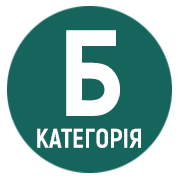PROBLEMS OF TRANSLATING THE FRAME STRUCTURE OF THE CONCEPT “HOUSE” IN SLAVIC LANGUAGES
DOI:
https://doi.org/10.32782/2412-933X/2025-XXIV-16Keywords:
concept, home, house, frame, linguistic worldview, phraseology, translationAbstract
The article presents a comprehensive study of the concept of «home/house» (dim/dom) in three Slavic languages – Ukrainian, Polish, and Russian – focusing on its frame structure, lexical-semantic features, cultural connotations, and translation issues. The theoretical framework of cognitive frame analysis of concepts is outlined, identifying the key components of the “home” concept (notional, evaluative, and imagery components). The linguistic manifestations of the concept in Ukrainian, Polish, and Russian are compared, including basic vocabulary (lexemes such as dim, khata, dom), phraseological units (e.g. “at home even the walls help”), and metaphorical models (for instance, personification of the home as a living being). Culturally specific aspects of the concept in each language community are analyzed: the Ukrainian image of the native khata as the spiritual center of the family, the Polish stereotype of the dom as a symbol of family and national identity (from the noble manor to the modern home), and Russian notions of the home hearth and the communal living experience (kommunalka). The paper discusses challenges in translating elements of the “home” frame between these languages, particularly conveying culture-loaded terms (khata, dwór, kommunalka), achieving equivalence of proverbs and idioms, and choosing the appropriate lexeme (e.g. dim vs khata) in translation. The study concludes that “home” is a universal basic concept with a common core meaning (association with family, security, and belonging), yet it exhibits culture-specific nuances in each language. Translation insights confirm the importance of accounting for the frame structure of this concept to ensure translation adequacy.
References
Бєлєнецька О.М. Концепт як одиниця культури і мовної свідомості: монографія. Черкаси : Вид-во ЧНУ ім. Б. Хмельницького, 2011. 252 с.
Кононенко В.І. Концептологія в лінгвістичному аспекті. Мовознавство. Київ : Академперіодика, 2006. № 2–3. С. 111–117.
Лебеденко Ю.М., Василенко Я.В. Національна специфіка концепту дім у польській мові (на матеріалі асоціативного експерименту) Лінгвістичні дослідження. 2016. Вип. 44. С. 97–102.
Павленко Н.Д. Концепт у лінгвокультурологічному аспекті: типологія й мовна репрезентація : монографія. Дніпро : Пороги, 2016. 272 с.
Переяслов В.О., Ткач О.В. До питання про етнокультурний концепт хата/дім в українському та китайському дискурсі. Moderní aspekty vědy : kolektivní monografie, Sv. XVIII. Praha : Vědecká perspektiva, 2022. С. 202–210.
Селіванова О.О. Когнітивна лінгвістика : підручник. Полтава : Довкілля-К, 2008. 512 с.
Bartmiński J. Językowe podstawy obrazu świata. Люблін : Wydawnictwo UMCS, 2012. 328 с.
Fillmore Ch. J. Frame Semantics and the Nature of Language. Annals of the New York Academy of Sciences. 1976. Vol. 280. P. 20–32. DOI: https://doi.org/10.1111/j.1749-6632.1976.tb25467.x.
Lakoff G. Metaphors We Live By. G. Lakoff, M. Johnson. Chicago : University of Chicago Press, 1980. 242 р.
Pazio-Wlazłowska D., Lazić-Konjik I., Ristić S. Co nas łączy, a co dzieli? Stereotyp domu w języku polskim, serbskim i rosyjskim. Etnolingwistyka. Problemy Języka i Kultury, 32, P. 67–84.
Wierzbicka A. Semantics, Culture, and Cognition: Universal Human Concepts in Culture-Specific Configurations. New York : Oxford University Press, 1992. 487 с.






